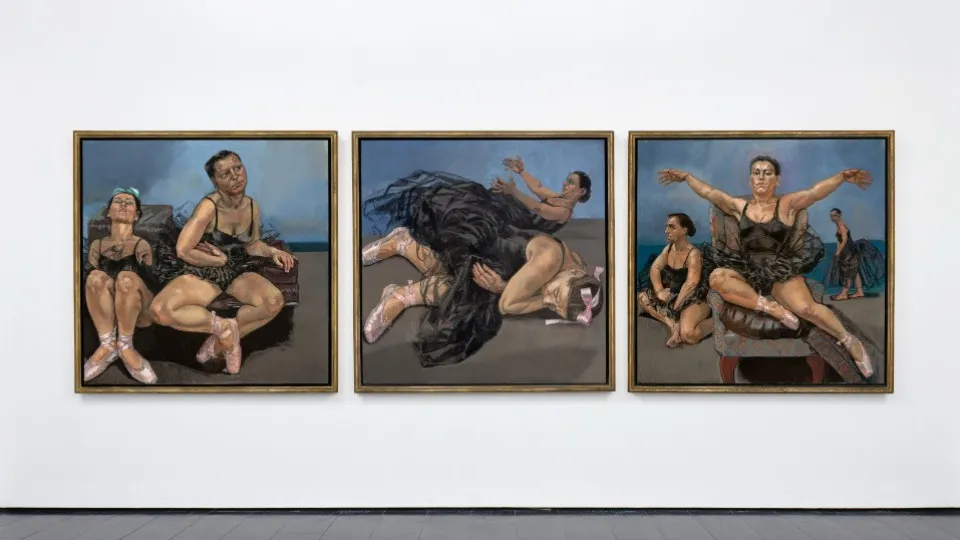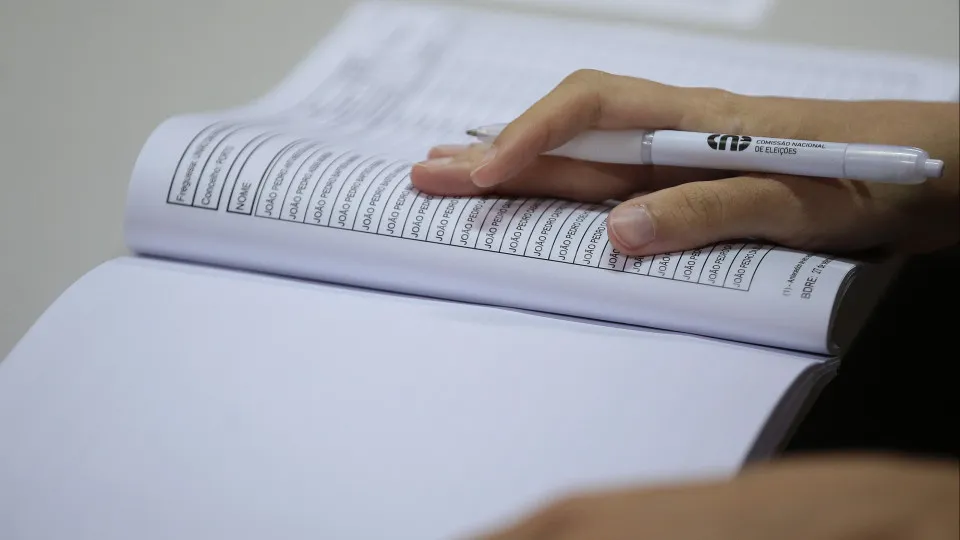
‘Maria Helena Vieira da Silva: Anatomy of Space’, curated by Flavia Frigeri, Director of Collections at London’s National Portrait Gallery, will be showcased at the Guggenheim Museum until February 22, 2026.
The exhibition, comprised of eight thematic sections, offers an in-depth exploration of the evolution of the visual language of Maria Helena Vieira da Silva (1908-1992) and delves into key moments in the artist’s career, from the 1930s through the late 1980s, paying particular attention to her interest in architectural space, according to the museum’s exhibition dossier.
The museum highlights that Vieira da Silva, in her paintings, “dissolved the boundaries between real and imagined urban landscapes and went beyond formal references to Portuguese visual culture and avant-garde movements such as cubism and futurism.”
‘Maria Helena and Arpad’, ‘Anatomy of Space’, ‘Checkmate: Dancers, Chess Players and Card Players’, ‘World War II seen from Rio de Janeiro’, ‘Return to Paris’, ‘Cities: Real and Imaginary’, ‘Exteriors and Interiors’, and ‘Shades of White’ are the themes of the exhibition’s eight sections.
Each section explores a phase in the work and life of Vieira da Silva, such as the painter’s relationship with her husband, Arpad Szenes, through a series of reciprocal portraits; the artist’s studio-workshop; her time in Rio de Janeiro and her return to Paris, the influence of chess on her work, among others.
“The concept of space is a central theme in the work of Maria Helena Vieira da Silva: her compositions, featuring labyrinthine structures, chromatic rhythms, and fragmented perspectives, capture the essence of a world in perpetual transformation,” reads the exhibition presentation.
Parallel to the exhibition, the Guggenheim Museum has presented a program of initiatives, including the screening of ‘VIEIRARPAD’, a documentary by João Mário Grilo, on January 30 and 31, 2026, along with several guided tours.
The museum’s statement recalls Maria Helena Vieira da Silva’s connection to collector and patron Peggy Guggenheim and businessman and art collector Solomon R. Guggenheim.
Vieira da Silva was included by Peggy Guggenheim in the “31 Women” exhibition in New York in 1943, and Solomon R. Guggenheim (Peggy Guggenheim’s uncle and founder of the Guggenheim Foundation) was among the early supporters of the Portuguese artist, purchasing her work “Composition” in 1937, now part of the Guggenheim Museum’s collection in New York.
Maria Helena Vieira da Silva was born in 1908 in Lisbon, establishing herself as a painter in Paris, where she met her husband, Hungarian artist Arpad Szenes.
After a seven-year exile in Brazil during World War II, she was granted French citizenship.
The painter’s work is displayed at the Centre Georges Pompidou in Paris, MoMA and the Guggenheim in New York, the Tate Collection in London, the Thyssen-Bornemisza in Madrid, the Art Institute of Chicago, the Ashmolean Museum in Oxford, and the Pinacoteca do Estado de São Paulo.
In Lisbon, the Arpad Szenes – Maria Helena Vieira da Silva Foundation, which owns a museum and an extensive collection of both artists’ works, is dedicated to promoting and studying the work of both artists, as well as artists who were close to them.
Vieira da Silva was elected a Member of the Royal Academy of Arts in London in 1988 and was appointed an Officer of the Legion of Honor in France, with her insignia presented by President François Mitterrand in 1991. She passed away in Paris in 1992.




